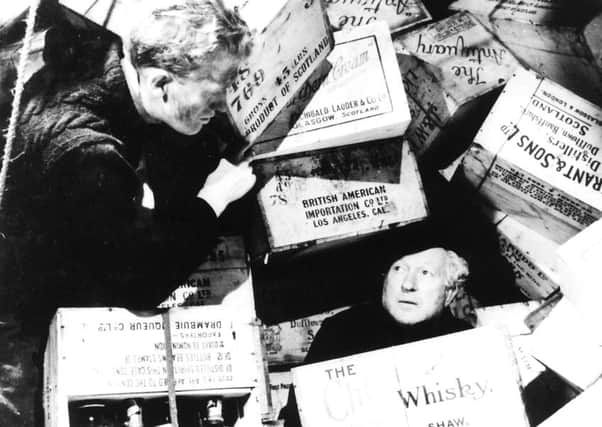Classic film Whisky Galore! '˜unlikely forerunner' of Trainspotting


But a leading university academic says Whisky Galore! can now be seen as an unlikely forerunner of Trainspotting for his depiction of hard-drinking Scots.
Speaking in a BBC Scotland documentary to be broadcast on Hogmanay, Dr Jonny Murray, of Edinburgh University, said there was a remarkable resemblance between the canny islanders and Irvine Welsh’s characters. And he describes Trainspotting merely following a long tradition of “substance abuse” being featured in Scottish movies, describing Danny Boyle’s 1996 adaptation as “kailyard set to club beats”.
Advertisement
Hide AdThe Hogmanay show Wha’s Like Us?, which is presented by Still Game star Sanjeev Kohli, charts the history of the nation’s portrayal on the big screen, with reminders of how the Scots have regularly been portrayed as tight-fisted, tartan-wearing, hard- drinking, God-fearing and “always up for a fight.”
The hour-long documentary describes Whisky Galore as a classic example of kailyard – “a shorthand for how Scotland was presented to the world for many years”.
Dr Murray said: “Kailyard referred to images of Scotland that portrayed it as parochial, cut off from the modern world, small-town, hapless lads, winsome lassies. They certainly weren’t something you could recognise yourself in.
“Quite a lot of the elements of 20th century Scottish stereotype are present and correct in Whisky Galore – the slightly drunk, slightly unruly local, the figures who are magically cut adrift or don’t seem to respect at all the conventions of how we live in the modern world.
“But, as viewers, we’re also very aware that they know that they’re playing a stereotype. They’re not the joke, they’re in on the joke and the joke is being played on someone else.”
Dr Murray added: “There is a lot of substance abuse in Scottish cinema. It’s very much an escape from reality.”